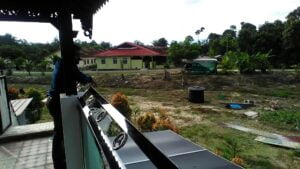Back for Part 2…
Wound care executives, investors, and specialists from all over the world enjoyed Part 1 of our visit with Dr. Mogan Naidu of MediAsia Advance Wound Care & Tissue Repair Center in Penang, in northern Malaysia. I have especially enjoyed witnessing an increased number of our colleagues and clients actively commenting and contributing directly to Dr. Mogan’s LinkedIn discussions since then. At the the recent SAWC Spring and EWMA 2018 conferences, both new and old acquaintances pulled me aside to express appreciation for exposing them to wound care in other settings, or to ask how they might become involved in emerging markets wound care.
The conversation turns to wound care services and future plans…

Whereas Part 1 of our discussion focused more on wound care product price points, adoption, and usage in Malaysia (and developing markets in general), in Part 2 we shifted to the wound care services ecosystem, the patient journey, challenges, telemedicine / mHealth (mobile health), and investment opportunities. Dr. Mogan also shared with me his team’s plan for a private wound care hospital to treat patients from Malaysia and the surrounding region (Indonesia, The Philippines, and others). I even got a chance to tour the site (the land has already been purchased), and they took me on a buggy tour of the grounds and surrounding village.
Although the focus of our conversation was wound care in Malaysia, many of the needs articulated also exist across the emerging–and even developed markets. As such, we are actively synthesizing new business models for global advanced wound care, which is an area of great interest to our stakeholders–wound care product, service, digital health, and investment professionals alike.
Topics we discussed included:
- Although advanced wound care in developing markets does not yet have the same level of awareness or infrastructure as in developed markets (which is not very high, either), the volumes at a specialty care setting such as MediAsia (and other wound centers we have visited in this part of the world) is on par with the top 10 percent of US-based wound care centers.
- In addition to the challenges faced by wound care services providers globally (clinician education, patient compliance, lack of resources, etc.), Dr. Mogan explains how many patients turn first to traditional healers can further delay the time until a patient arrives to a specialty wound care center (if at all), and will likely use up patients’ funds that otherwise might be used for specialized wound care. This is consistent with what we have seen in our wound care work across many other markets, including Latin America, Africa, and across Asia (and even among some medical tourists and immigrants to the US). We also discussed this phenomenon in our previous article, The Case for Emerging Market Wound Care.
- Due to the distances traveled for wound care, as well as the international medical tourism component, there are opportunities for telemedicine and mHealth that are equally if not more attractive than those in the developed markets (indeed, we have been deeply involved in many such initiatives at Diligence Wound Care Global).
- Wound care patients (international and domestic) are prepared to spend cash when they come to receive treatment, which gives providers some more flexibility in terms of the therapies and payment models incorporated.
Watch the interview (closed captions available):
Become a keener wound care executive.
Are you currently considering investing in, launching, or expanding a wound care business in the emerging markets? Get in touch to discuss how we might empower you to reach your goals.



